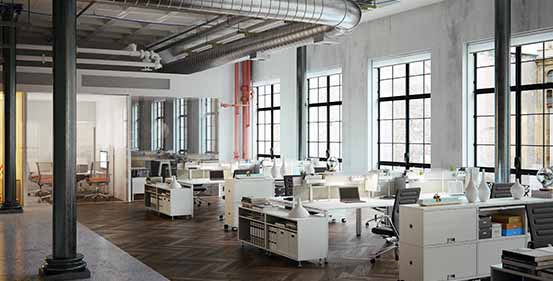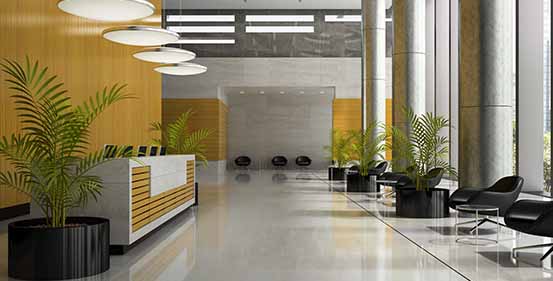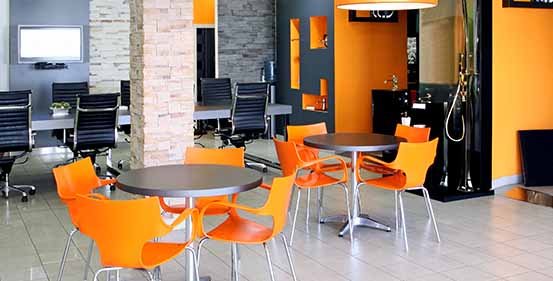The nights are drawing in and the days are getting colder, which can only mean that winter is on the way, and this isn’t just turning the mornings frostier. Research has shown that workplace productivity decreases in the colder months as activity levels drop and the reduced amount of sunlight means less vitamin D. Employees might not experience the cognitive distractions that summer bring, but their behaviour patterns and routines are affected due to a number of different elements.
Temperatures in the office is something every company struggles with and it’s a huge influencer on productivity. Statistics show that a few degrees difference can have a 5% degradation on productivity levels, but what is the optimum temperature in the first place?
Over the years, research has accumulated and many have come to the conclusion that the ideal workplace temperature ranges between 22 and 25 degrees Celsius, but there are many things that should be factored in to this.

The type of working environment you want to promote should also be thought of when choosing the perfect office temperature. Keeping the room slightly warmer fosters creative thinking and can have a direct impact on collaboration. Whereas, cooler workplaces help to keep employees alert when carrying out repetitive tasks.

Where you’re located and your building also has an impact on the temperature of your work space. Those sat near large windows may feel the benefits of the summer sun streaming in, but in winter this may be replaced with cool draughts. Likewise, if you have high ceilings it can lead to poor air distribution, which in turn can mean your heating systems have to work harder to keep the room at a constant temperature.
Lighting is a big contributor to SAD (seasonal affective disorder) and The Winter Blues, which can have a direct impact on office productivity during winter. Lack of sunlight and reduced natural daylight means employees’ neurotransmitters, serotonin and dopamine (feel-good hormones) are in short supply, leaving them feeling sluggish and irritable, affecting their output.
However, it’s not just a case of flicking a switch. There are many elements to office lighting that should be deliberated before the winter months truly set in.
Believe it or not, the colour of the lighting can have both a positive and negative impact on your employee’s productivity. It all depends on the atmosphere you want to create at certain times of the day and in specific work spaces. Cooler temperatures work well in mornings for increasing alertness and reducing fatigue, giving way to warmer tones in the afternoon.
In intimate settings or break out areas, warm lighting should be installed to create a sense of comfort and relaxation, but for collaborative spaces then cooler tones should be chosen to lower melatonin and increase readiness.
Where your lights are hung affects how productive your staff are. You may have got the temperature of the light right, but placed in the wrong position and this can backfire. Lights shouldn’t be directly above desks. They can cause unflattering shadows on workspaces as well as contributing to health issues such as headaches and eye strain.
Whilst this may not be possible for every business, giving individual workstations control over their lighting can have a positive impact as it offers employees flexibility on their atmosphere and enables them to adapt it to their requirements.
One company that implemented this is Accident Fund Holdings, allowing those who worked at their headquarters in Michigan to control their environment.
Along with the temperature and lighting of workplaces, there are many other environmental elements that impact employees’ productivity during the chillier period.

During summer the landscape is filled with an abundance of greenery, but as the months turn colder this becomes absent from the outside which can have an impact on productivity. The gloomier exterior can leave staff feeling glum, so to turn this around you should consider harnessing natural elements and spreading them around the workplace.
Plants and flowers introduce a variety of textures into spaces, providing visual stimulation and an increase in creativity. They’re also renowned for purifying the air with reducing CO2 by 50% along with reducing the amount of dust and bacteria floating around.

The psychology of colour is no stranger in the office design world, and it can have a profound impact on the mood of your staff throughout the day. The colour palette of your workspace should inspire and engage and be reflective of the different areas, especially when motivation is lower than usual.
Red is a strong colour to use in areas that are intended for collaboration due to its directional connotation. Whereas, in contrast to this, blue is a good choice for breakout areas as it emits calming and relaxing signals. In creative spaces, yellow is ideal for allowing those creative juices to flow, whilst green zones create a natural connection in meeting spaces.